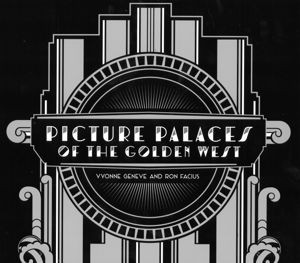Architecture WEST AUSTRALIANA
AS NEW. SCARCE
Picture Palaces of the Golden West focuses on the built form and exotic decor of the picture theatres in the art deco era in Western Australia while placing them in the continuum of the earliest advent of film to the present time. Based on seminal research by Vyonne Geneve at The University of Western Australia, this book draws on long-held memories and well-remembered incidents brought to life by the drawings of designer Ron Facius, which capture the ambience of the buildings and the excitement they brought to Western Australia.
- 231 pages, 74 pages of plates : illustrations (some colour), facsimiles (some colour), black and white plans, portraits (some colour) ; 24 x 29 cm First Edition
#0819/181124
The publication also documents the changing attitudes to architectural form and societal expectations, due in no small part to the influence of the movies in this isolated Australian state.
Both authors have fond recollections of the golden years of cinema when, prior to the advent of small home screens, dressing up to ‘go to the pictures’ was part of a much-anticipated and hugely popular form of entertainment and community interaction.
Picture Palaces of the Golden West is dedicated to the principal cinema architects of the 1930s who, working in a conservative environment, brought the glamour of Hollywood to the streetscape of one of the most remote cities in the world. A unique response to the local climate demanded an outdoor picture garden in every suburb and regional town, and produced innovative designs that combined open-air picture gardens and hardtop theatres.
Acknowledgement is made of the film entrepreneurs, travelling picture showmen, local exhibitors and the hard-working projectionists who kept the movies running through many vicissitudes.
Due to the significance of the cinemas of the 1930s and their influence on the social development of the state, the Art Deco Society of Western Australia pressed for recognition of the heritage value of these buildings, the majority of which have now been National Trust classified and state heritage listed.
The publication also documents the changing attitudes to architectural form and societal expectations, due in no small part to the influence of the movies in this isolated Australian state.
